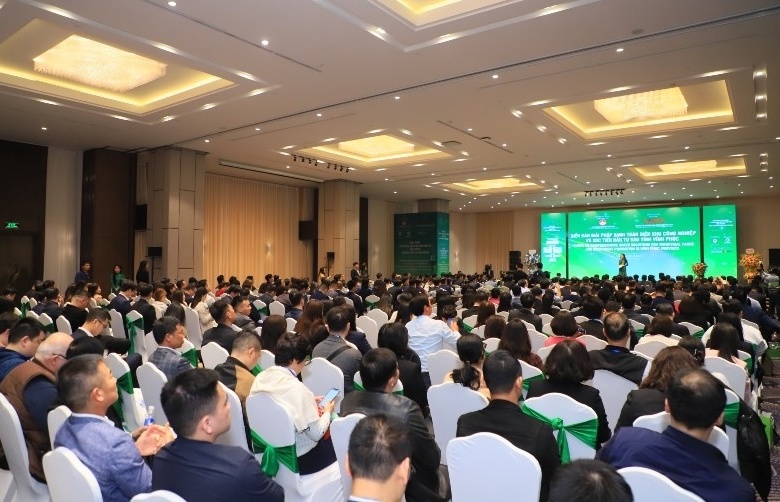Fine tuning a well-oiled machine
 |
| Industry and Trade Minister Vu Huy Hoang |
Under the targets set by the 11th Party Congress and the country’s 2011-2020 socio-economic development strategy, Vietnam will basically become an industrialised country by 2020. In order to achieve the target, we will have to build and develop many measures, including short and long-term ones.
First of all, Vietnam will have to accelerate the shift of its industrial production structure towards manufacturing, deep processing and added-value sectors, reducing subcontracting production, low-value and imported raw material manufacturing sectors. That is the most basic measure for industrial manufacturing promotion in Vietnam.
Secondly, we have to review industrial development planning and the implementation of those plans. During the past, there have been many shortcomings relating to industrial planning and adjustment. Many plans were approved and enacted in the past. However, they were not abided by during implementation processes, resulting in an imbalance between demand and supply and the use of resources and investment.
Therefore, we must pay greater attention to this measure to ensure that plans are built under specific forecasts of development requirements. The plans must also satisfy general demands on productive force allocation, production capacity improvement, income and job creation for all economic sectors, domestic production promotion and export market acceleration.
 |
| The nation’s supporting industry needs to be souped up to support a range of sectors |
The third measure will be a focus on human resource quality improvement. The quality of human resources has remained a “bottle-neck” in Vietnam’s economic development and in industrial production. We have a population plentiful in number and young in age, which is considered an advantage for Vietnam.
However, the major challenge here is that our workforce is still limited in its professional ability, failing to meet industrial development requirements. If we do not have suitable solutions as soon as possible, our productivity will continue to be much lower than other countries in the region. In the meantime, the shortage of a skilled workforce will make Vietnam’s business conditions less attractive to investors.
The next measure is the building of a framework of policies and mechanisms to accelerate industrial production. The government has been very interested in building legal frameworks for industrial development. The 12th National Assembly has also approved many economic laws, including those concerning industrial development.
However, in our opinion Vietnam is still short of some legal documents defining industrial development. On the other hand, with the existing legal documents, there have remained situations that implementation guidelines came too late. If we do not keep going with the building of adequate legal framework for industrial production, it will be a hindrance for the sector’s development.
The slow development of Vietnam’s supporting industry is a clear example of the lack of a legal framework for industrial development. Despite the government’s drastic instructions and relating ministries’ works on the building of a supporting industry development decree in Vietnam, there have been different points of view about this issue.
Some opinions stressed that we should only implement the existing preferential policies for economic development and for industrial development, that we could have a well developed supporting industry. In the meantime, there were opinions asserting that Vietnam was not sufficiently attractive for supporting industry investors regarding current policies and schemes. The Ministry of Industry and Trade has the second viewpoint, thinking that without the government’s interference in policies and mechanisms, there will be very few investors interested in this area.
We are trying to complete the final draft decree on supporting industry development for the government’s approval. We are strongly confident that the government will soon give the nod to our proposal.
However, we should also not be a perfectionist in demanding an immediate legal document to satisfy all requirements. I think we should go step-by-step by building a legal framework with basic orientation for supporting industry development. We will then gradually update and adjust it during the implementation process when finding necessary improvements. This must be a gradual development based on the actual demands of real life.
The fifth measure for Vietnam’s industry development in this decade is to fully implement the Party and State’s guidelines on international economic integration while still maintaining national self-control and independence, ensuring the ability to provide sufficient supplies for domestic demand and economic development. This is an issue that we must solve cleverly, balancing the two requirements of integration and independent development.
Finally, we must create a shared awareness and agreement among the society, the business community and branches and localities regarding industrial development policies and strategies. By achieving that agreement, we will successfully realise the country’s industrialisation and modernisation targets, making Vietnam an industrialised country in 2020.
What the stars mean:
★ Poor ★ ★ Promising ★★★ Good ★★★★ Very good ★★★★★ Exceptional
 Tag:
Tag:
Related Contents
Latest News
More News
- Georgia: the right place to visit and invest (December 18, 2024 | 16:15)
- Quang Ngai’s incentives will lure in industrial investment (December 17, 2024 | 17:00)
- Dong Thap excited to hail investors to industrial zones (December 17, 2024 | 15:00)
- Dong Thap pushes on with crane conservation efforts (December 17, 2024 | 12:00)
- Wholesale upgrades drive Tien Giang goals (December 17, 2024 | 11:00)
- Investing channels worth attention (December 17, 2024 | 09:08)
- Proper mindset vital for serious investors (December 16, 2024 | 16:30)
- Market signals point to new openings for investment (December 16, 2024 | 12:09)
- Drivers remain strong for consumer sector (December 14, 2024 | 16:00)
- Decoding the variables shaping investments in 2025 (December 13, 2024 | 10:53)


















 Mobile Version
Mobile Version